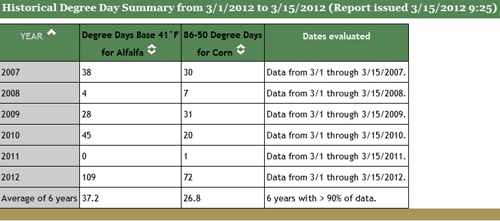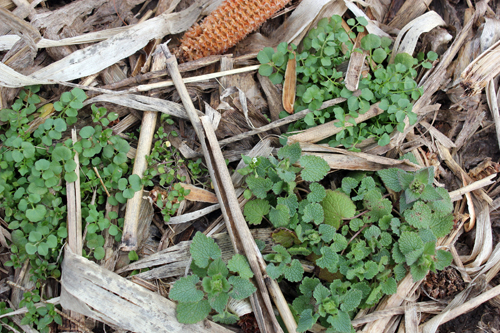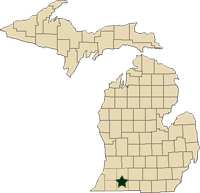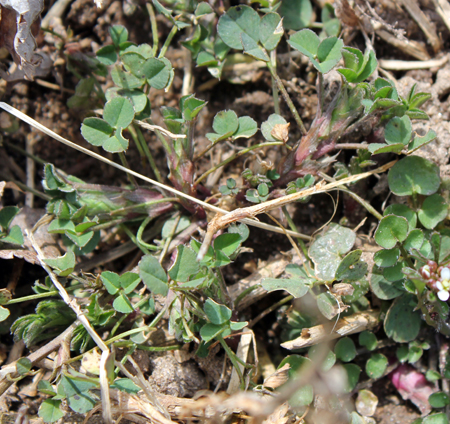Regional reports on Michigan field crops – March 15, 2012
MSU Extension educators’ pest and field crop updates for Michigan.
This week’s regional reports:
- Southwest Michigan – Bruce Mackellar
Southwest Michigan – Bruce Mackellar, Michigan State University Extension
|
Weather
In a word: Wow! While it is a little early to be thinking about planting corn and soybeans, the fantastic weather in the forecast for southwest Michigan should help growers to prepare for the upcoming growing season. Certainly the warmth will help to bring soil temperature up for rapid germination when we do start planting. Strong, localized thunderstorms produced damaging winds and hail across highly localized portions of the region on March 12 and again overnight on March 15.
Growing degree day accumulations
We normally start recording growing degree days for field crop production on March 1. That might be a little bit late given the conditions this winter and spring. As you can see in the table below, GDD accumulation this year is pretty much more than two-times what we have seen in the last five years.

Growing degree data from the Lawton, Mich., Enviro-weather station, Van Buren
County.
Our normal base 50 GDD accumulations for this time of year are around 1-2 GDD’s per day. With the forecasted temperatures in the 70s all next week (March 18-24), we might be looking at 8-12 GDD’s per day (base 50) or more, depending on night-time low temperatures. Both the 6-10 day and 8-14 day outlooks have southwest Michigan firmly in the above-average temperature range.
Precipitation
A check of the seven-day precipitation totals shows that large portions of St. Joseph, Branch and Allegan counties received 1 to 2 inches of precipitation. The warm temperatures kept snowfall totals below normal across southwest Michigan for most of January and February. This did not necessarily mean that we had lower than normal precipitation totals, however. On average, the southwest MSU Enviro-weather stations recorded 4.2 inches of precipitation from January 1 through March 14.
Looking at precipitation totals from the weather recording stations around the region, precipitation has run from about 0.25 inches below normal to 1.2 inches ahead of normal for the last four weeks. Both the 6-10 and 8-14 day outlooks from NOAA have southwest Michigan in the above normal precipitation area, with the heaviest rainfall expected in the northwest counties of Michigan. Surface water levels are running at normal to above normal levels in many lakes, ponds and streams across Van Buren County.
Crops
|
Alfalfa has broken dormancy in many areas across the region. Soft winter conditions may have helped alfalfa weevil to survive. Watch for adult feeding and egglaying on alfalfa stems, especially near more protected areas in fields. One widely referenced model predicts larval feeding at 300 GDD’s base 41 from January 1. This number is going to sneak up on us quickly this year.
Wheat is beginning to “green up” nicely now in the southwest. Warm temperatures will likely advance both wheat and winter annual weed growth. You can review weed control options, wheat growth stages and application windows for herbicide applications for wheat in MSU Extension Bulletin E-454, “Weed Control Guide for Field Crops.” The bulletin is available on the web at Christy Sprague’s weed control website.
Corn and soybean field prep. There should be excellent opportunities for conducting field operations over the next couple of weeks. Keep an eye on winter annual weed growth, as this can cause problems with insects and seed to soil contact. Tillage is a good option as long as soils are dry enough to not cause compaction issues. Herbicides can also work well. Information on herbicide options for spring burn-down in corn are listed in Table 1J in the 2012 MSU E-434 Bulletin “Weed Control Guide for Field Crops. Soybean recommendations can be found in Table 2N.

Winter annual weed growth, March 15, 2012.
Grain bin aeration management.Major swings in temperature can lead to moisture migration in grain bins. Look for low humidity, cool temperature windows of opportunity to bring grain temperatures to around 50 degrees for longer-term stored commodities.



 Print
Print Email
Email






